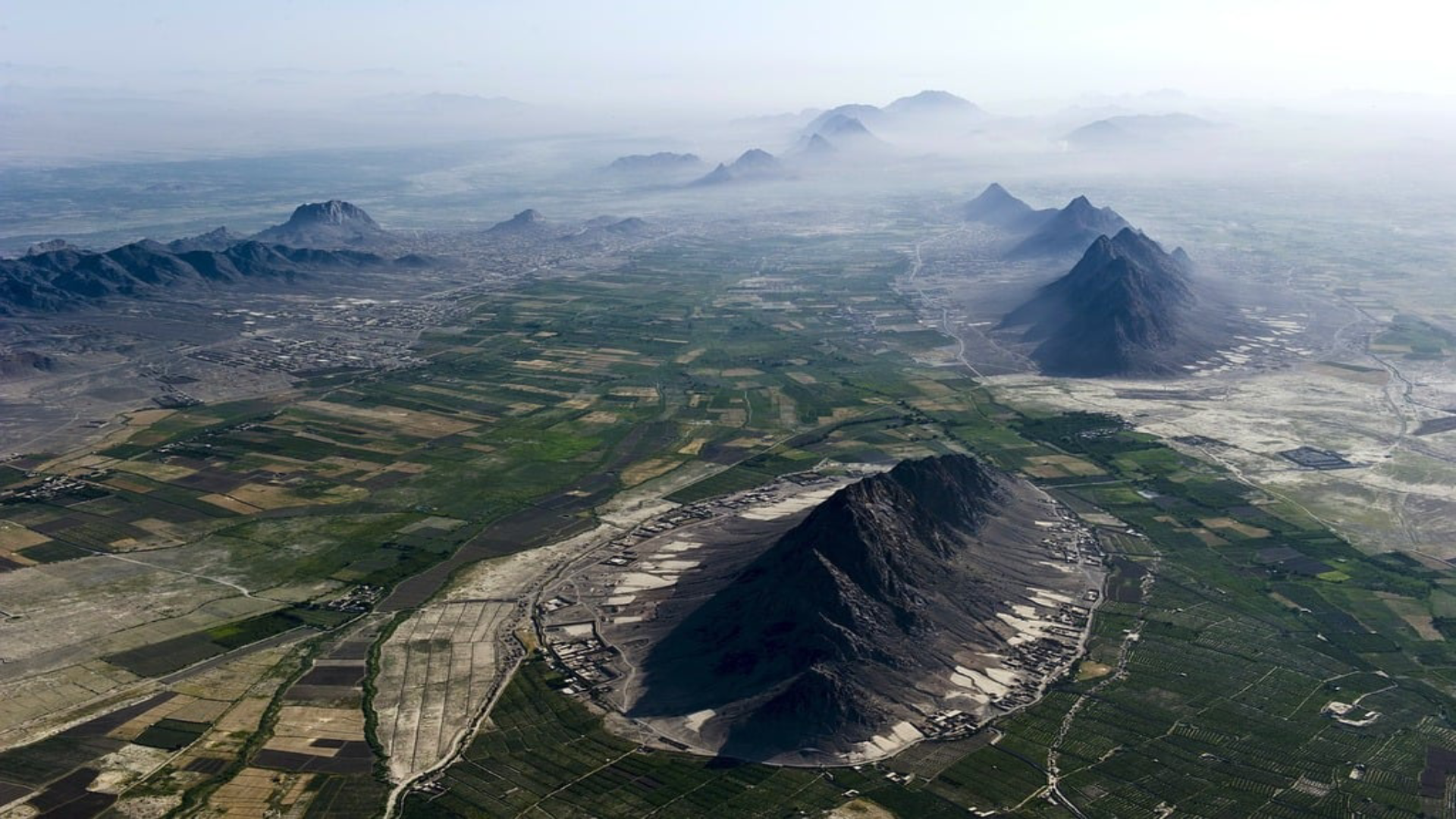Mundigak

Mundigak is an important archaeological site located in southern Afghanistan, specifically in the Zabul province. It was inhabited during the Bronze Age and is often associated with the early urbanization in the region, particularly with the Indus Valley Civilization and the interactions between the Iranian Plateau and the Indian subcontinent.
Situated along the Helmand River, Mundigak occupies a strategic location at the crossroads between the central Asia and the Indus Valley. This made it a hub for trade, cultural exchange, and interactions between various regions.
Dates and Chronology:
Mundigak was occupied over several periods, with the most notable phases occurring during the Bronze Age:
- Early/Mature Harappan (Indus Valley Civilization) Period – The main occupation of Mundigak is generally dated between 2500 BCE to 1700 BCE.
- Post-Indus/Local Bronze Age – Following the decline of the Indus Valley Civilization, Mundigak remained a significant settlement until about 1500 BCE.
- Later Periods – After the peak of the Bronze Age, the site seems to have been abandoned, with little evidence of settlement in the Iron Age.
Key Features and Structures:
Urban Layout: Mundigak features a well-planned settlement structure, with evidence of carefully laid-out streets, buildings, and public spaces, suggesting a highly organized society. The site's layout indicates that it was designed with a sense of urban planning and centralization, much like contemporaneous settlements of the Indus Valley Civilization.
Architecture:
- The main buildings were constructed using mud bricks, which were typical for the region during this time period.
- Large Structures: Excavations have revealed large rectangular and square buildings that likely served as residential or administrative centers. The use of mud brick and the size of the buildings suggest a settled, organized urban population.
- Walls and Fortifications: Evidence of defensive walls and fortifications suggests that Mundigak may have been a center of trade and strategic importance, which may have required protection.
Artifacts:
- Pottery: Mundigak is well known for its distinctive pottery styles, including fine, well-crafted ceramics that resemble those found in the Indus Valley Civilization. The pottery often features geometric designs, incised patterns, and sometimes script-like markings.
- Tools and Weapons: Stone tools, including blades, chisels, and other implements, have been found at the site. The site also features evidence of early metallurgy, such as copper and bronze objects, indicating an advanced knowledge of metalworking.
- Seals and Inscriptions: Seals similar to those found in the Indus Valley Civilization have been discovered at Mundigak. These seals often feature animal motifs and geometric patterns, but no decipherable script has been conclusively identified.
Trade and Cultural Exchange:
- Trade Goods: The site has provided evidence of extensive trade networks, including items such as carnelian beads (which were likely imported from the Indian subcontinent), copper, and other valuable materials. The presence of these items indicates that Mundigak was an active participant in long-distance trade routes.
- Cultural Interactions: Mundigak's material culture reflects a blend of influences from both the Indus Valley and the Iranian Plateau. This is seen in the pottery styles, the architectural techniques, and the artifacts recovered from the site.
Excavations and Discoveries:
- Excavations at Mundigak have been ongoing since the 1960s. Early digs were led by French archaeologists, notably the team under the direction of Paul Bernard in the 1960s and 1970s. These excavations uncovered significant portions of the city, including residential areas, a large communal building, and a variety of artifacts that helped date the site's major phases.
- More recent work has focused on the further excavation of structures, as well as the study of materials recovered, helping to refine our understanding of the site’s chronology and its role in ancient trade networks.
Significance of Mundigak:
- Cultural Importance: Mundigak is a key site for understanding the intersection of cultures in this region. It provides valuable evidence of the interactions between the peoples of the Indus Valley and Central Asia.
- Trade and Economy: The presence of exotic materials such as beads from India, as well as copper and bronze tools, indicates that Mundigak was a major center for trade and economic activity. This trade likely involved agricultural products, metals, and crafts from the surrounding areas.
- Urban Development: The planned nature of the settlement and its public and private buildings showcase the advanced urban development of the time. The size and scale of the settlement indicate a complex social organization, potentially with a central administration.
- Bronze Age Metallurgy: Evidence of early metallurgy at Mundigak points to the development of skills related to copper and bronze casting, reflecting the technological advancements of the period.
Decline and Abandonment:
Like many other Bronze Age sites, Mundigak appears to have been abandoned by around 1500 BCE. The reasons for its decline are not entirely clear but may have been due to environmental changes (such as shifts in river courses), declining trade, or other social or political factors that led to the abandonment of the city.
Mundigak remains one of the key archaeological sites for understanding the early urbanization of the Southern Asian region. Its discoveries highlight the significance of the site in ancient trade networks and the technological and cultural exchanges that took place between different civilizations. While much of its history is still being uncovered, Mundigak provides a window into the rich and complex societies of the Bronze Age.
- https://itoldya420.getarchive.net/media/afghanistan-landscape-aerial-view-nature-landscapes-f26aeb